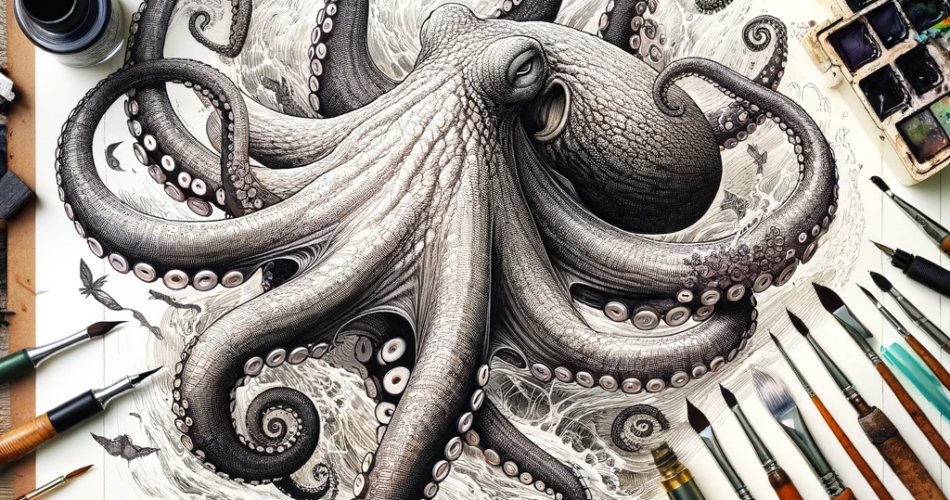Table of Contents
Introduction
Inking an octopus presents a unique challenge due to its fluid form and dynamic tentacles.
This guide will help you create a detailed and lifelike ink drawing of an octopus, capturing the essence of this fascinating sea creature.
Key Takeaways:
- Techniques for creating a realistic octopus illustration in ink.
- Selecting tools for capturing the octopus’s fluid form and texture.
- Tips for depicting the movement and anatomy of tentacles.
- Enhancing your artwork with lifelike details and depth.
Choosing Your Tools
1. Selecting Inking Tools:
Brush pens are ideal for creating the smooth, flowing lines needed for the tentacles, while fine liners can add detail to the texture of the skin.
2. Inks and Colors:
A range of blues, purples, and blacks will help you capture the varied hues of an octopus’s skin.
The Inking Process
1. Sketching the Form:
Begin with a light pencil sketch, focusing on the octopus’s body shape and the arrangement of its tentacles.
2. Outlining:
Use a fine pen to define the outline of the octopus, ensuring the tentacles have a natural, fluid curve.
3. Adding Texture:
Use fine strokes to depict the texture of the octopus’s skin, including the suction cups on the tentacles.
4. Shading:
Apply shading to create depth, especially under the tentacles and around the body, to give the octopus a three-dimensional appearance.
Enhancing Your Artwork
1. Capturing Movement:
Show the octopus in motion by varying the position and curve of the tentacles.
2. Background Elements:
Consider adding elements of the ocean floor or coral to place the octopus in its natural habitat.
FAQs on How to Ink an Octopus
Q: How can I make my octopus drawing look more realistic?
A: Focus on the fluidity of the tentacles and the texture of the skin. Study photos of real octopuses for inspiration.
Q: What are some tips for inking the suction cups?
A: Use small, consistent circles for the suction cups, varying their size and spacing along the tentacles.
Q: Can I add color to my octopus ink drawing?
A: While not necessary, subtle coloring can enhance the realism, especially for depicting the changing colors of an octopus’s skin.
Q: How do I create a sense of the underwater environment?
A: Add elements like seaweed, bubbles, or rocks, and use light shading to create a sense of water around the octopus.



